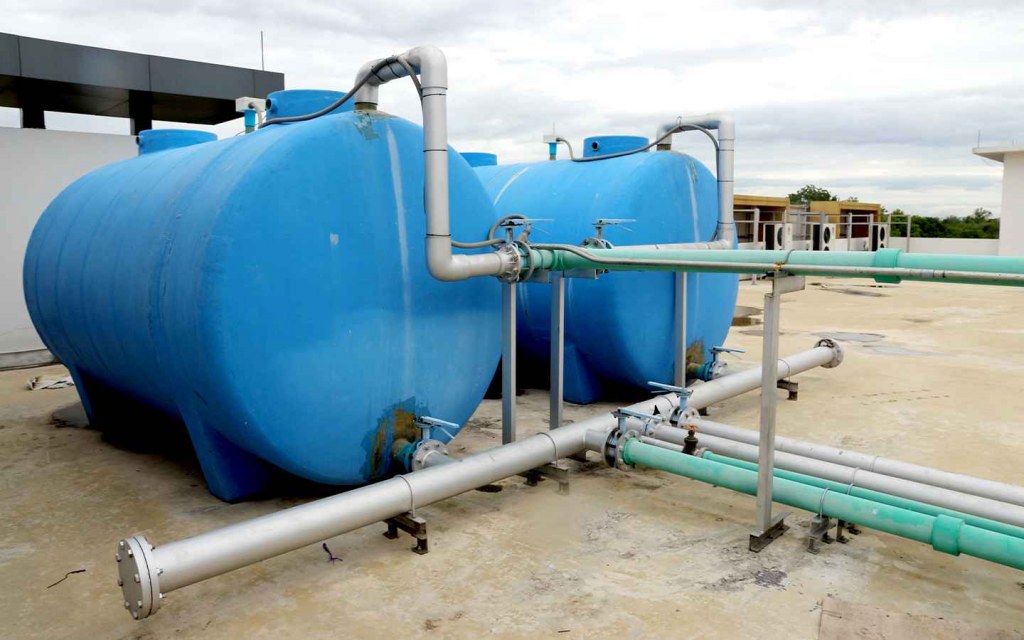News
The Ultimate Maintenance Guide for Long-lasting Water Tanks

To ensure that your water tank remains functional for years to come, it is important to regularly perform maintenance tasks. Neglecting maintenance can lead to costly repairs and even premature replacement of the tank.
In this guide, we will discuss the steps you need to take to keep your water tank in top condition.
The Different Types of Water Tanks
Before we dive into the maintenance tips, let’s first understand the different types of water tanks available in the market.
Polyethylene tanks
These are made of plastic and are lightweight, making them easy to install and move. They are also resistant to corrosion and have a longer lifespan compared to metal tanks.
Fiberglass tanks
These tanks are made of glass fibers and resin, making them strong and durable. They are also resistant to corrosion and can withstand extreme temperatures.
Metal tanks
These tanks are typically made of steel or aluminum and are known for their strength and durability. However, they are prone to rusting and require regular maintenance to prevent corrosion.
Maintenance Tips for Water Tanks
Now that we have a basic understanding of the types of water tanks, let’s take a look at some maintenance tips that apply to all types of tanks
1. Regular Inspections
It is important to inspect your water tank at least once a year. Look for any cracks, leaks, or signs of corrosion. If you notice any issues, address them immediately to prevent further damage.
2. Keep the Area Around Your Tank Clean
Ensure the area surrounding your water tank is free from debris, vegetation, and waste. This not only helps in preventing damage or corrosion but also discourages pests and rodents from nesting near your tank. A clean environment around your water tank can significantly reduce the risk of contamination.
3. Monitor Water Levels
Using a float switch can help you monitor water levels efficiently, ensuring your tank never overfills or runs empty. An overfilled tank can stress its structure, leading to leaks or breakage, while an empty tank, especially in metal types, is more prone to rust and corrosion. Regular monitoring with a float switch allows for timely refills and helps maintain optimal water levels, prolonging the life of your tank.
4. Clean Your Tank Regularly
Over time, sediment and debris can build up in your water tank, reducing its storage capacity and promoting bacterial growth. It is recommended to clean your tank at least once a year using a mild detergent or bleach solution. Be sure to rinse the tank thoroughly before refilling it.
Common Tank Maintenance Mistakes to Avoid
Once you are aware of the maintenance tasks, it is equally important to avoid common mistakes that can harm your water tank.
1. Using Harsh Cleaning Agents
Avoid using harsh chemicals or cleaning agents when cleaning your water tank. These can damage the tank’s surface and contaminate the water supply. Stick to mild detergents or bleach solutions specifically designed for water tanks.
2. Neglecting Repairs
Ignoring small issues such as a minor crack or leak can lead to bigger problems in the future. It is best to address any problems immediately to prevent further damage and costly repairs.
3. Not Following Manufacturer’s Instructions
Each type of water tank has specific maintenance requirements outlined by the manufacturer. Be sure to follow these instructions carefully to ensure proper care and longevity of your tank.
Conclusion
Regular maintenance is crucial in keeping your water tank functioning efficiently for years to come. By following these maintenance tips and avoiding common mistakes, you can save yourself from costly repairs or replacement of your water tank in the future. Remember, prevention is always better than cure when it comes to maintaining your water tank. So be sure to schedule regular inspections and cleaning to keep your water tank in top condition!
